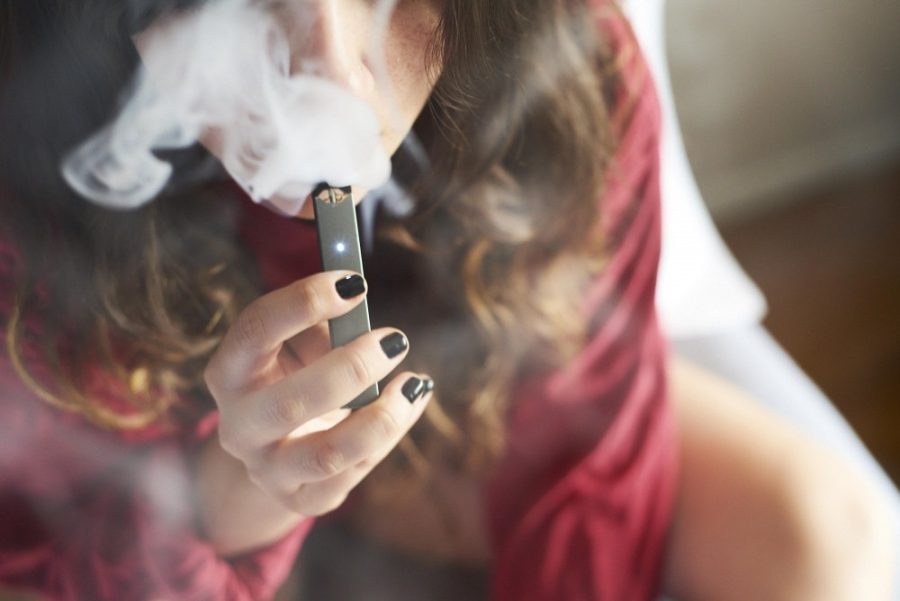Would you ever smoke cigarettes? What about e-cigarettes? JUUL Labs, a e-cigarette company, has exploded in popularity in the past few years, according to a report by Tobacco Control, especially with youth.
According to the report, between 2015–2017, “JUUL has transformed from a little-known brand with minimum sales into the largest retail e-cigarette brand in the USA,” with the retail sales in the last quarter of 2017 making up about 40 percent of the entire e-cigarette retail market.
The brand is very appealing to youth markets, the report found, so much so that the FDA took action to “stop youth use of, and access to, JUUL and other e-cigarettes.” The reason? Trendy, discreet design and flavors like Fruit Medley and Crème Brulee.
RELATED: Researchers work to improve Parkinson’s disease treatment
“It’s being marketed as the cool, hip, fun thing to do so the rebellious teen spirit decides that ‘oh, I’m going to express that through vaping,’” said Judith Gordon, a University of Arizona College of Nursing professor.
Gordon, along with researchers at Oregon Research Behavioral Intervention Strategies, have received a $1.5 million National Institutes of Health Small Business Innovation Research Phase II grant to update a smoking prevention program they created 10 years ago.
Click City: Tobacco Prevention Program is an online program for fifth graders, and testing has shown that it is effective at reducing the intention of youth to smoke.
Gordon said rates of e-cigarettes use is now double that of conventional cigarettes among youth, so they’re updating the program to include content, language and imagery specific to e-cigarettes.
“We’re focusing on showing that using e-cigarettes is not cool. Right now, tobacco companies are trying to do what they did with cigarettes 30 years ago, and really marketing them toward youth,” Gordon said. “We’re also trying as much as possible to provide information about the risks associated with using e-cigarettes.”
While e-cigarettes may be less risky than conventional cigarettes, Gordon said they do carry risk, primarily of addiction to nicotine.
While most college-aged people today are “inoculated” against conventional cigarettes, Gordon said they’re falling for e-cigarette advertising mostly due to a misconception that e-cigarettes are totally safe.
“A lot of the reason that young people don’t smoke is they’ve gotten the message for a long time that smoking is dangerous and not healthy for them,” Gordon said. “But they’re getting a message now, particularly from advertising and from social media, that e-cigarettes are safe and so you can go ahead and vape and nothing bad will happen to you.”
This isn’t a new tune that e-cigarettes are singing; Gordon said they’re simply reusing older advertising strategies.
“A lot of the e-cigarette companies are owned by big tobacco so they’re just recycling their advertising campaigns that they’re not allowed to use anymore for cigarettes,” Gordon said.
While Gordon said even within the tobacco control community there’s debate over how safe e-cigarettes are or are not, there is consensus that they don’t want young people to be using those products.
“Nicotine is nicotine no matter what form you get it in and it is highly addictive,” Gordon said. “The earlier you start using nicotine in life the more physiologic changes you have in your brain because of it, and the more changes you have in your brain the more difficult it becomes later on to quit.”
RELATED: ‘Pick your Poison’
A final misunderstanding, Gordon said, is that there really is such thing as second-hand vapor.
“Some people would never smoke because … they don’t want to harm other people, but they think that vaping doesn’t harm other people,” Gordon said. “Vapor is particularly harmful to small children and pets who spend time on the floor, because unlike smoke which tends to rise and then attach itself to your clothes and walls, vapor is heavy and so it drops to the floor so you get … residue on the floor that can contain chemicals and obviously contains nicotine.”
The updates to Click City: Tobacco will be done in the next 11 months, Gordon said, and then the program will be tested in schools in Southern Arizona and Oregon. They’re currently looking for schools willing to participate, and those schools will receive monetary as well as the program free of charge.
Follow Marissa Heffernan on Twitter









